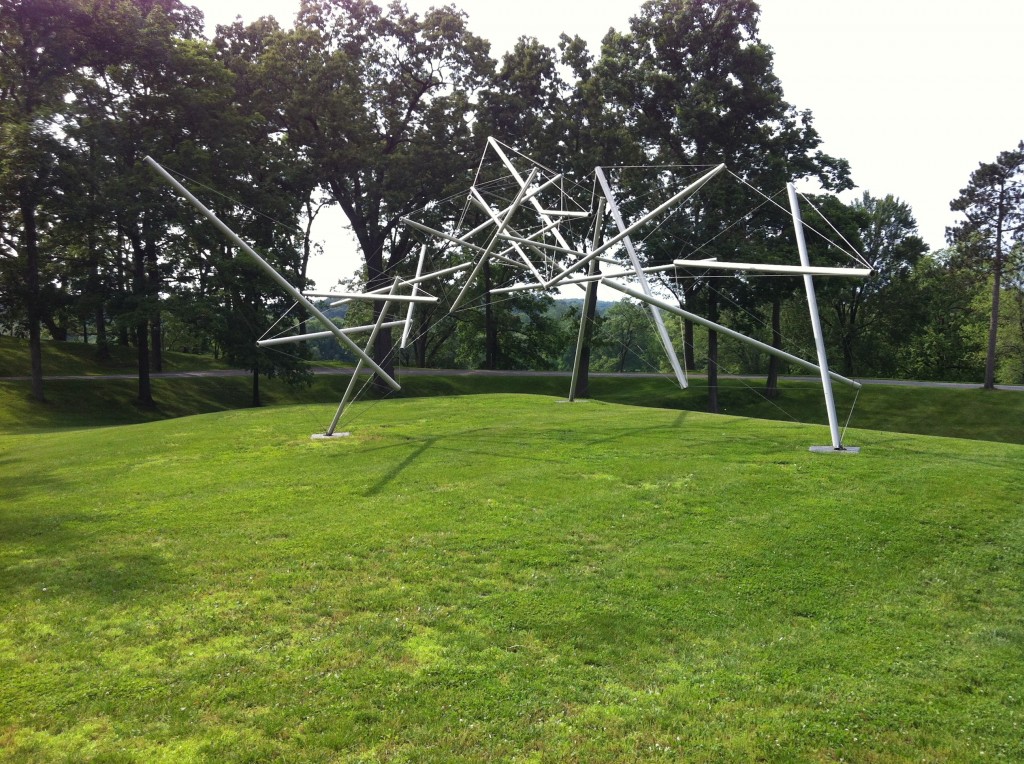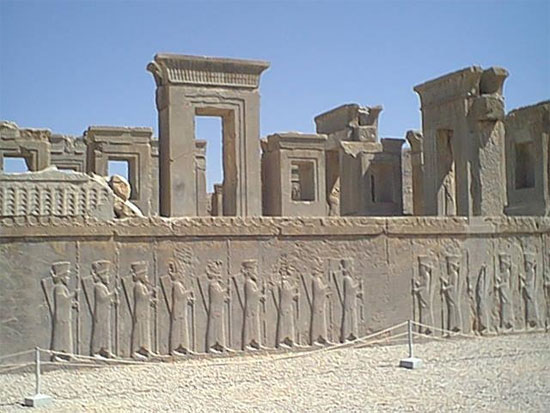
Free Ride Home by Kenneth Snelson

Persepolis, in Iran
Of all of the music we play that makes reference to nature, it is the work of Iannis Xenakis (1922-2001) that for me most clearly suggests natural phenomena in their manner of operation and capacity for overwhelming power. The Greek born Xenakis was a trained and practicing architect, engineer, mathematician, music theorist, and not least one of the most important composers of the twentieth century. His application of mathematical models and architectural concepts to sound resulted in a music of beautifully conceived forms containing highly volatile materials. Much like nature, his music seems to exist beyond human directed goals or narrative structure. While obeying the necessary laws of physics, a natural event has its own sense of time and space and a capacity for both the sublime and the terrible, but it is ultimately unpredictable and utterly without concern for humans or our experience of it. The Storm King Art Center, where we will play Xenakis’s Persephassa this weekend, is a place of extraordinary natural beauty in conversation with large-scale sculptures that require open space on a vast scale to be properly perceived. By bringing Xenakis’s music into this landscape we hope to introduce another physical element to the environment, one constructed in both time and space and made up of sonic materials, and to extend this conversation into the realm of sound.
Persephassa, for six percussionists, was composed in 1969 and premiered at the first Shiraz Festival, held in the ruins of Persepolis, an ancient Persian site. Its title is a variation on the name Persephone, the goddess of springtime. Making use of the physical layout of the space, Xenakis explored his interest in spatial music by placing the percussionists in a hexagon around the perimeter of the site. The music itself is designed to exploit this placement and send material spinning around and across the ensemble, often in multiple directions at once, and at ever changing rates. At Storm King, we have chosen to place the ensemble at the edges of a natural plateau surrounding Kenneth Snelson’s 1974 sculpture Free Ride Home, composed of aluminum and stainless steel tubes and wires. Here, the six percussion setups will take on elements of both the natural landscape and the human designed artworks inhabiting it, and mediate between them. The listener will be able to sit between the players and hear Xenakis’s meticulously crafted lines spinning around the circle and feel its raw brutality, or sit on a hill above and experience it from a distance, an event of massive power but still not so close as to be dangerous.
The sounds of Persephassa are produced on drums, slabs of wood, metal pipes, thin sheets of metal, stones, and siren whistles. The percussionists begin each section with a unified line, each player gradually striking out at an individual speed, separating from the other players. The lines retain their integrity, but the interaction between them becomes unpredictable. To me this has always felt something like applying heat to a material and watching the molecules launch into motion, eventually becoming chaotic and irregular, not unlike making popcorn. At moments of greatest intensity Xenakis interjects a six-part burst of irregularity and chaos that he refers to as a nuage or cloud, an interaction that he has described as both functioning like a rain storm or a mob in the street – a teeming mass of unpredictable elements.
In planning this work for Storm King it was always clear that its scale would be ideal for the design of Persephassa, providing the space to set up around the audience and let the spatial and temporal processes of the work play out. But it is the uncontrollable aspects of the site, the wild surroundings and its susceptibility to nature that are most in accord with the shattering impact of the work at its most extreme moments.
Now, let’s just hope it doesn’t rain.
-Matthew Gold, Talea Percussionist
